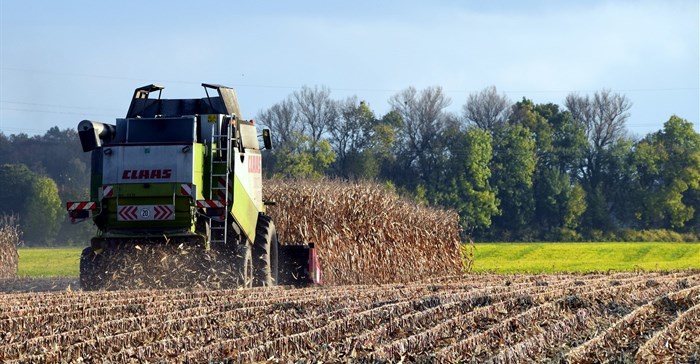
Subscribe & Follow
#AfricaMonth
In the news
SA's maize crop may help feed SADC

For SA, there are already promising indications that the country could retain its status as a net exporter of maize.
In the second week of 2017, the US agriculture department reiterated its view on SA's 2016-17 maize production, leaving its estimate unchanged at 13-million tonnes, which is a 65% year-on-year increase.
So far, the lowest market estimate is 11.7-million tonnes. If SA manages to achieve a crop within this range, it will regain its status as a net exporter of maize (local maize consumption is about 10.5-million tonnes a year).
Unfortunately, the prospects of agricultural recovery are slim for other Southern African countries. Although the season started on a sound footing across the region, Zimbabwe and Zambia are battling with army worms - pests of grass pastures and cereal crops. The outbreak of this pest started in Zambia towards the end of 2016 and continues to spread across the maize-producing areas. At the time of writing, reports from Zambia's agricultural ministry estimated that 124,000ha of maize had been affected (out of a total of 1.4-million hectares planted this season).
The army-worm infestation has now spread to Zimbabwe, with the Commercial Farmers Union suggesting that seven of the eight maize-producing provinces of Zimbabwe have already been affected. There are also reports that this pest is spreading to some regions of Malawi. So far, the extent of damage is unclear as governments and farmers in the aforementioned countries are actively applying control measures such as spraying.
These regional developments ring alarm bells for SA - we need to turn the spotlight on our preparedness to contain such outbreaks, even though there have not been any reported cases of army worm in SA. The Department of Agriculture, Forestry and Fisheries needs to maintain scouting efforts and encourage farmers to report any cases of this pest.
With Southern African countries having emerged from drought, crop damage by army worm will make grain imports from SA critical.
According to data from the UN Food and Agriculture Organisation, the average annual maize production of the Southern African Development Community (SADC) is about 30-million tonnes. More than 80% of this is produced by just four countries, namely SA with a 42% share, Tanzania with 18%, Malawi 12% and Zambia 9%.
This means two of the key regional maize producers are at risk - Zambia and Malawi. Ideally, Tanzania and SA would have to supply the region with maize this season. However, Tanzania is typically a net importer of maize. In fact, the largest volume of maize exported by Tanzania in the past 15 years was 274,428 tonnes in 2014. About 81% of this went to Kenya. Therefore, SA could be the key supplier of maize to the region in the coming months.
Recent estimates for SA's maize production are promising a full rebound. However, for that to be achieved, the country will need to get consistent rainfall at least until the end of February, when the crop reaches pollination stage. In the event that SA achieves at least the lower estimate of 11.7-million tonnes, then there could be a surplus of roughly 1-million tonnes to assist the region, particularly Zimbabwe, Botswana, Namibia, Lesotho and Swaziland.
This is a trying time for the region's agricultural sector and food security, which should spur governments and the private sector to invest more in research and development (R&D) so that in the ensuing cycles, the region is better prepared for disasters such as drought, pests and diseases. SA, being the most advanced agriculturally, has a responsibility to spearhead such R&D. This would not only lessen the burden for SA to cater for the region's needs, but the prosperity of other regional countries implies that they could come to the aid of SA in future if need be.
This expected increase in regional demand could indirectly affect South African consumers. At the moment, SA's July 2017 white maize futures are at R2,200 a tonne, which is 50% lower than the level seen in 2016. Prices fell in anticipation of a big harvest. Therefore, this regional outbreak could see prices gaining support again.
Overall, the region's agricultural sector is not completely out of the woods. After a devastating drought season, army worm could prove to be another disaster if not controlled effectively.
Currently, the extent of the damage is unclear, but South African traders and farmers should be aware of emerging regional demand and be better prepared to assist or trade.
Source: Business Day
Source: I-Net Bridge

For more than two decades, I-Net Bridge has been one of South Africa’s preferred electronic providers of innovative solutions, data of the highest calibre, reliable platforms and excellent supporting systems. Our products include workstations, web applications and data feeds packaged with in-depth news and powerful analytical tools empowering clients to make meaningful decisions.
We pride ourselves on our wide variety of in-house skills, encompassing multiple platforms and applications. These skills enable us to not only function as a first class facility, but also design, implement and support all our client needs at a level that confirms I-Net Bridge a leader in its field.
Go to: http://www.inet.co.za








